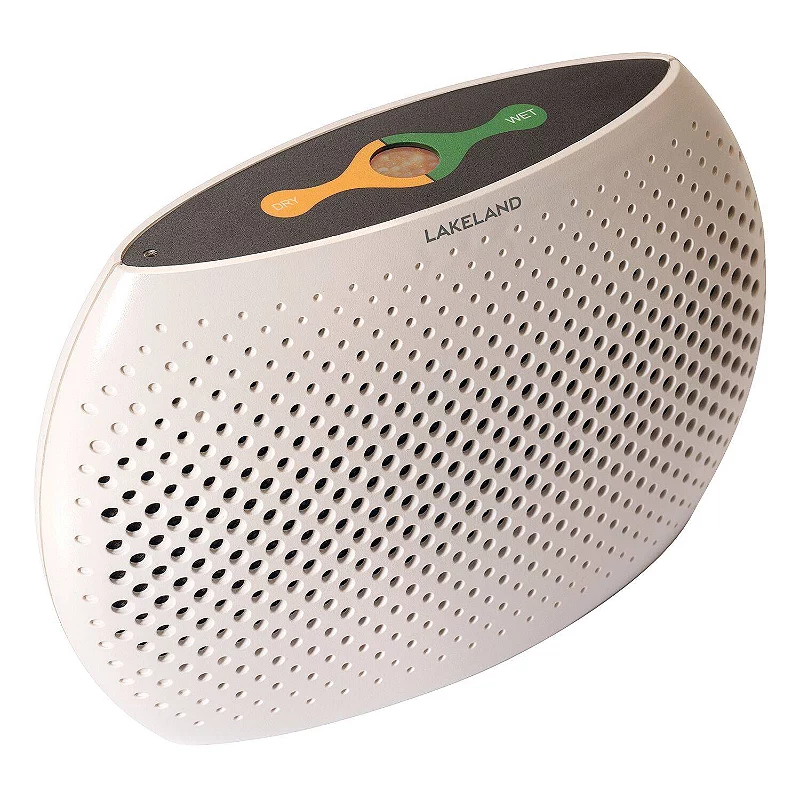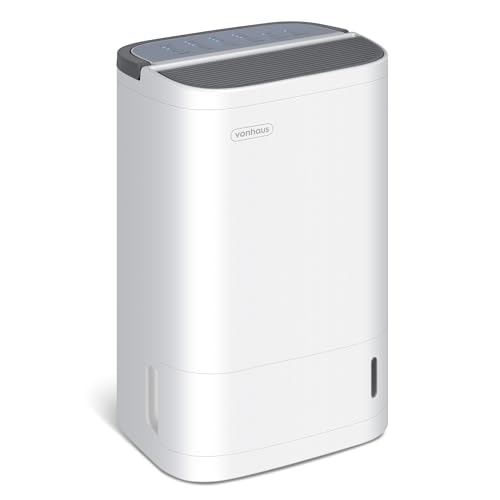How to stop condensation in a windowless bathroom once and for all – these simple expert tips will prevent mould and damp developing
No steamy windows? No problem
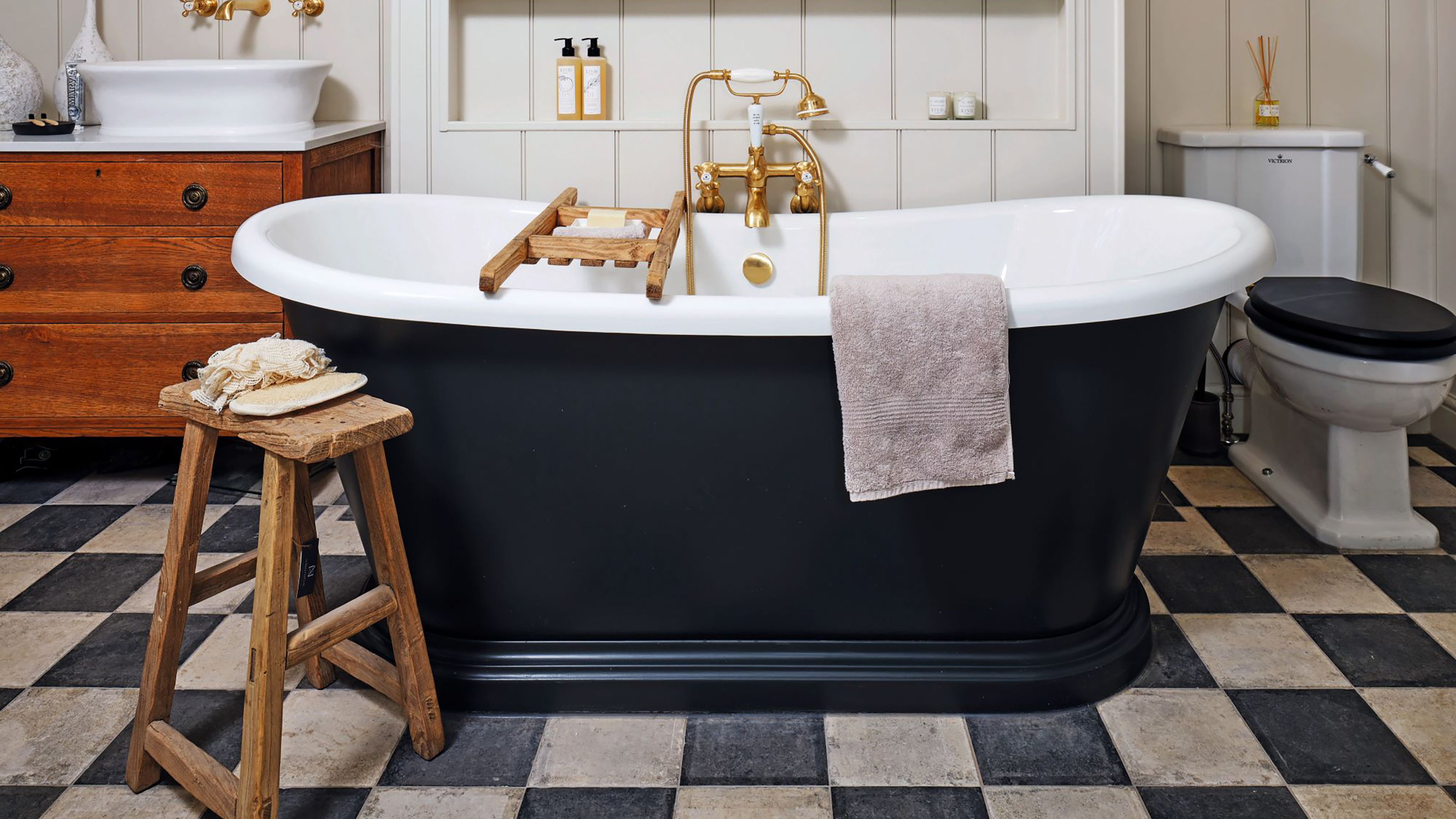
- 1. Upgrade your extractor fan or run it longer
- 2. Bring in a dehumidifier
- 3. Use absorbent materials
- 4. Keep the door open when it's safe to do so
- 5. Wipe down wet surfaces after use
- 6. Reduce the temperature of your bath or shower
- 7. Keep your bathroom warmer
- My top-rated dehumidifiers for windowless bathrooms
- FAQs

If your bathroom doesn't have a window, you'll know how quickly it can turn into a steamy, condensation-filled space after a shower.
For example, my mirror fogs up instantly, walls feel clammy, and I have to be careful in case mould starts to creep in, especially in colder months when ventilation to a windowless bathroom is particularly reduced.
According to the experts I spoke to, without an obvious escape route for moisture, it's all too easy for damp air to linger. However, with a few small tweaks and the right kit, you can stop condensation in its tracks and keep your bathroom feeling dry and fresh, no mould in sight. These are their top tips.
1. Upgrade your extractor fan or run it longer
If you only do one thing, make sure you extractor fan is up to the job as it's your main line for getting rid of condensation.
Katie Lilywhite, dehumidifier expert at AO.com explains that 'your bathroom should always be fitted with a vent because bathrooms without proper ventilation can run into several issues. Without ventilation, black mould can develop on ceilings, walls, and grout, along with your bathroom developing damp or musty smells due to trapped humidity.”
Look for one with a humidistat sensor like this Airvent quiet extractor fan, £57.98 from ToolStation, which automatically kicks in when the air becomes too humid, or a timer model, like this VentAxia Silhouette extractor fan timer, £53.98, from ToolStation, that continues to run for several minutes after you leave the bathroom.
And bathroom design expert David Cruz at MyJobQuote.co.uk advises that 'to ensure a fan is effective, choose one with a high extraction rate. This will usually be listed in the specifications as litres per second (L/s) or cubic metres per hour (m³/h). It should have a minimum rate 54m³/h to meet current building regulations, but an extraction rate between 100³/h and 300³/h is best for a large, windowless bathroom.'
Sign up to our newsletter for style inspiration, real homes, project and garden advice and shopping know-how
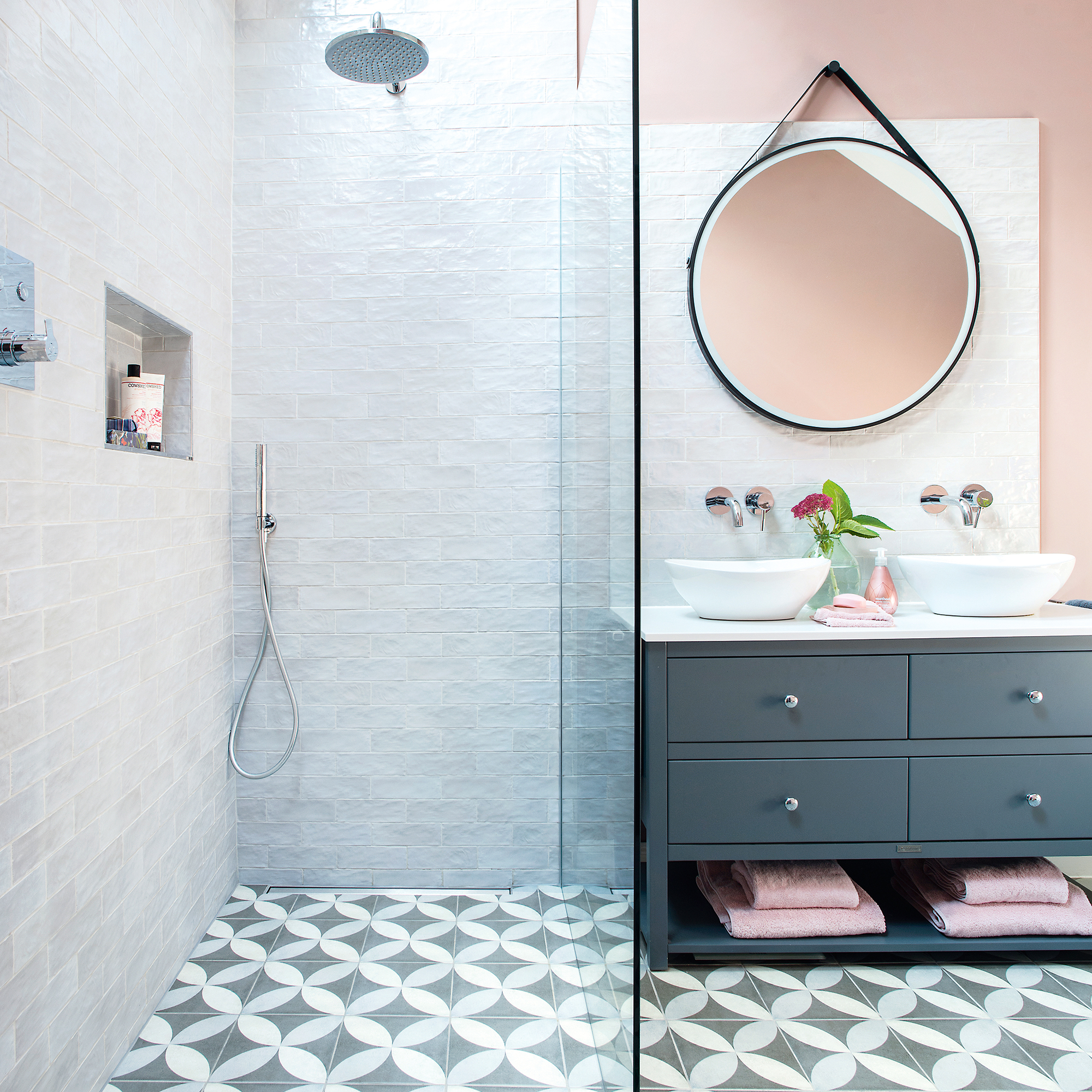
If your fan is old, noisy or struggling to clear the steam before it drips down the walls, it's worth replacing it. Newer, more powerful models can make a huge difference.
Alternatively, let it run for at least 10-15 minutes after a shower to properly clear the air. If your fan is wired to the light, you can keep it running independently by buying a simple isolator switch like this one, £4.73 from B&Q. Closing the bathroom door while it's on also helps contain the moisture so it can be vented out efficiently rather than escaping into the rest of the house.
2. Bring in a dehumidifier
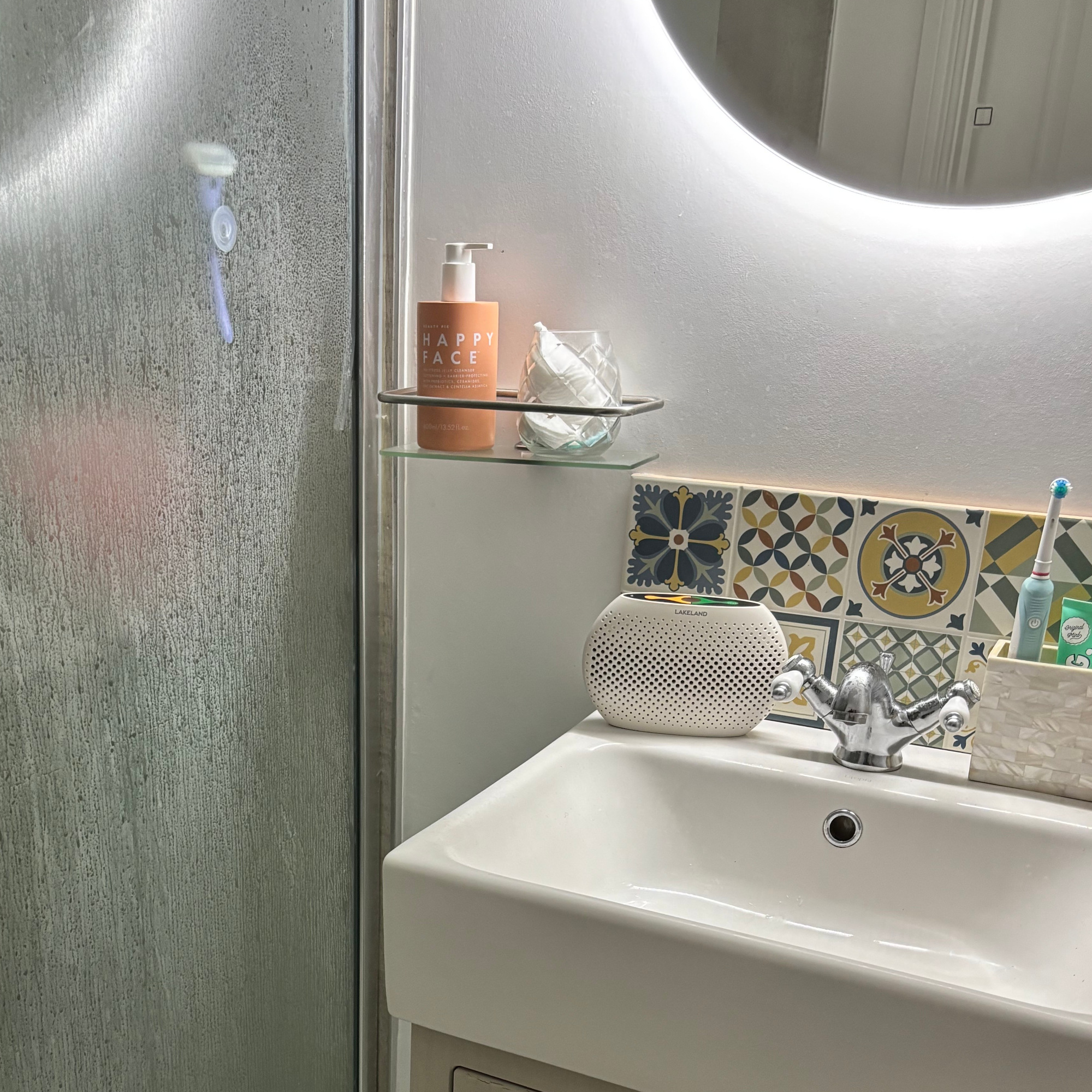
If you're still battling condensation, one of the best dehumidifiers can make a big difference, especially in bathrooms with poor ventilation. You might be asking 'can you use a dehumidifier in a bathroom?'
Meaco's Chris Michael says 'electric dehumidifiers aren’t IP-rated for wet environments, so using one in a bathroom is unsafe. However, for bathrooms with limited ventilation, a dehumidifier like the MeacoDry Arete Two, £185.97 at Amazon, positioned immediately outside on the landing or in the hallway with the door left open can effectively solve the humidity problem.'
He says you can 'either turn on the dehumidifier after bathing/showering or leave it in target humidity mode. It'll detect the humidity increase and switch itself off when it's removed the moisture. This position is common in many homes as the dehumidifier can service both the bathroom and bedrooms if the doors are kept open, keeping both damp and condensation-free. And when set to target humidity mode, it can be left to do the job without manual input.'
However, there are safe, compact models available that can be used in wetter environments and will provide a more targeted approach, such as the high IP-rated (24) water-resistant Ecoair Piccola dehumidifier, £193.39, available on Amazon, which can be mounted on the wall as a space-saving solution.
Alternatively, if you're dealing with a small bathroom, I found the Lakeland mini wireless dehumidifier, £24.99, worked wonders on condensation in our small ensuite when our extractor fan wasn't working.

Chris founded leading dehumidifier manufacturer Meaco and has been advising on humidity solutions and dehumidifiers since 1991 and is well-known within the dehumidifier industry across the world as a leader in innovation and sustainability. With a wealth of experience in the industry, Chris is committed to helping provide low-energy and low-noise solutions appliances that improve the lives of customers.
3. Use absorbent materials
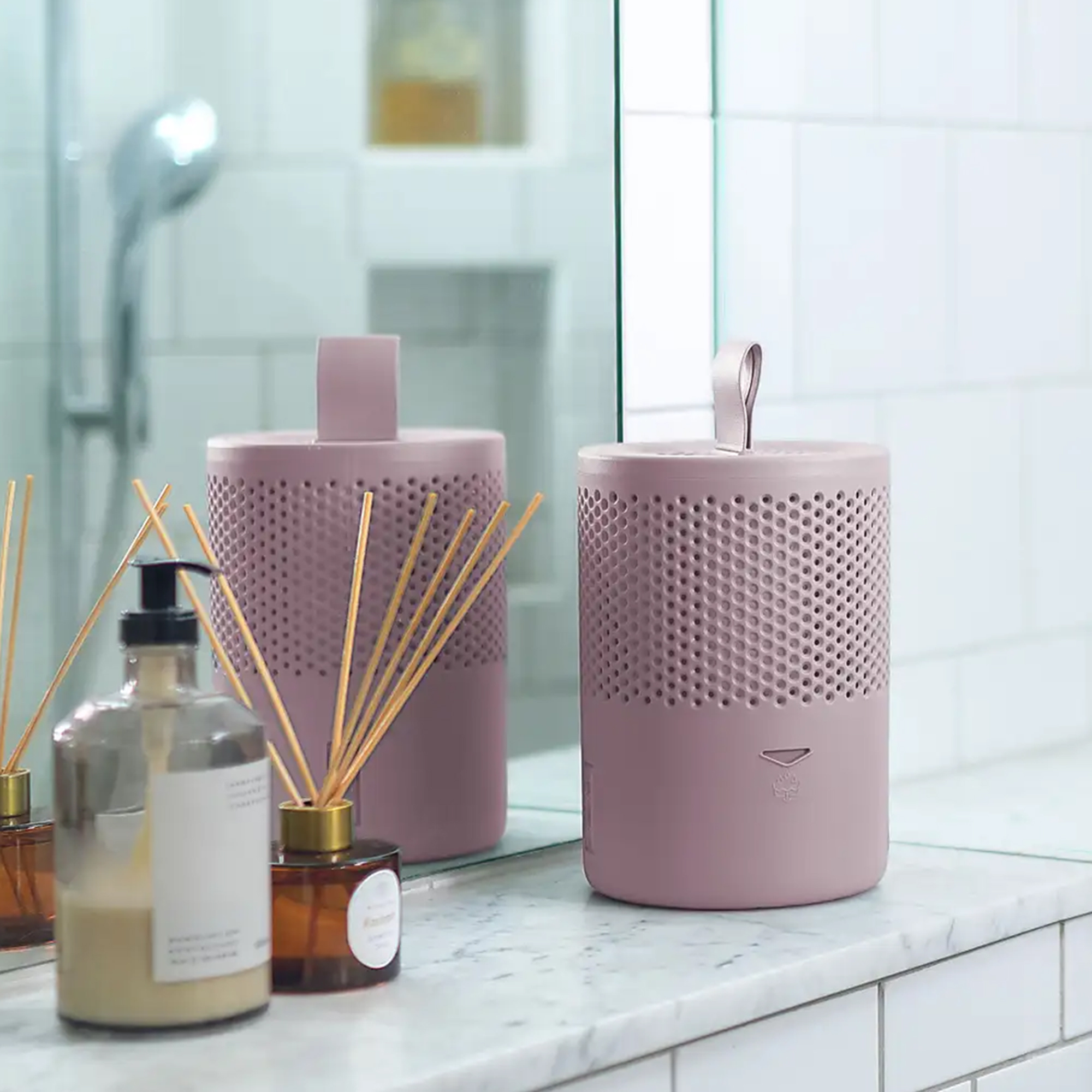
A quick, low-cost fix is to use moisture absorbers or refillable dehumidifier tubs like UniBond's Aero 360 humidity absorber, £15 from Amazon and set one on a shelf or on the toilet.
They're not the best solution, but they can help reduce that lingering damp smell and prevent surfaces from feeling sticky and clammy. And the Ideal Home team have tried out a number of these, one being the ever-so-stylish ye extremely effective, wireless Absodry duo family dehumidifier, which is £27.99 from Amazon.

Natalie Mitchell has worked as a property and construction expert for HomeHow for five years and has worked in the construction industry for over twenty years. Natalie continues to work on building projects while also providing expert construction and property advice to industry professionals and DIY enthusiasts.
4. Keep the door open when it's safe to do so
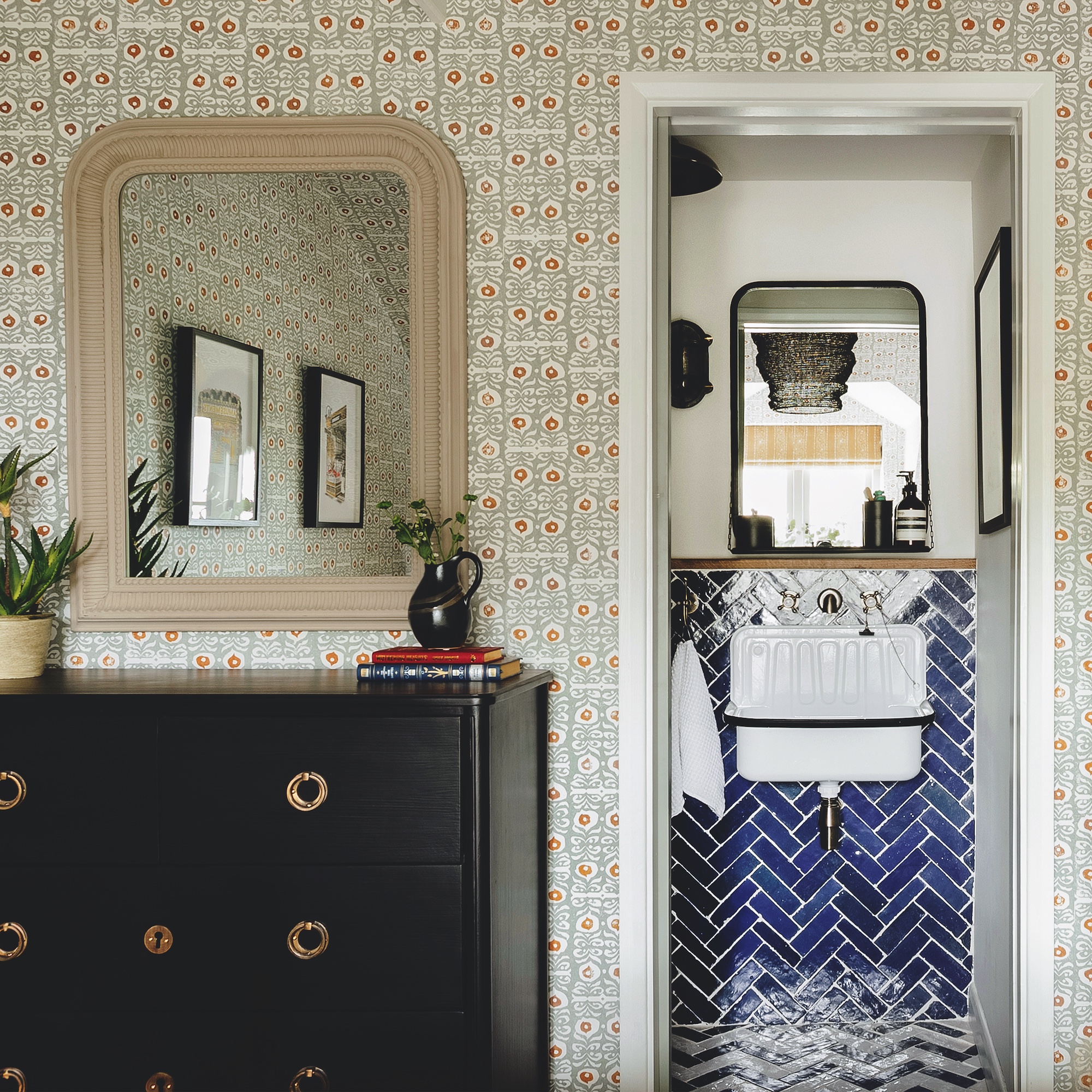
Once you've finished showering and the extractor has done its work, leave the bathroom door ajar to allow any remaining steam to escape into a larger, better-ventilated space.
David explains 'in a windowless bathroom, it’s essential to leave the door open when the bathroom’s not in use, to improve air circulation. If you don’t have a window or fan, you can reduce moisture by also leaving the windows and doors to neighbouring rooms open, to help with air flow.'
If your hallway has a window, open it for a few minutes to help the moist air disperse naturally.

AO's latest addition is Katie, a key expert at a multitude of appliances, including dehumidifiers, portable air conditioners, fans and air purifiers.
5. Wipe down wet surfaces after use
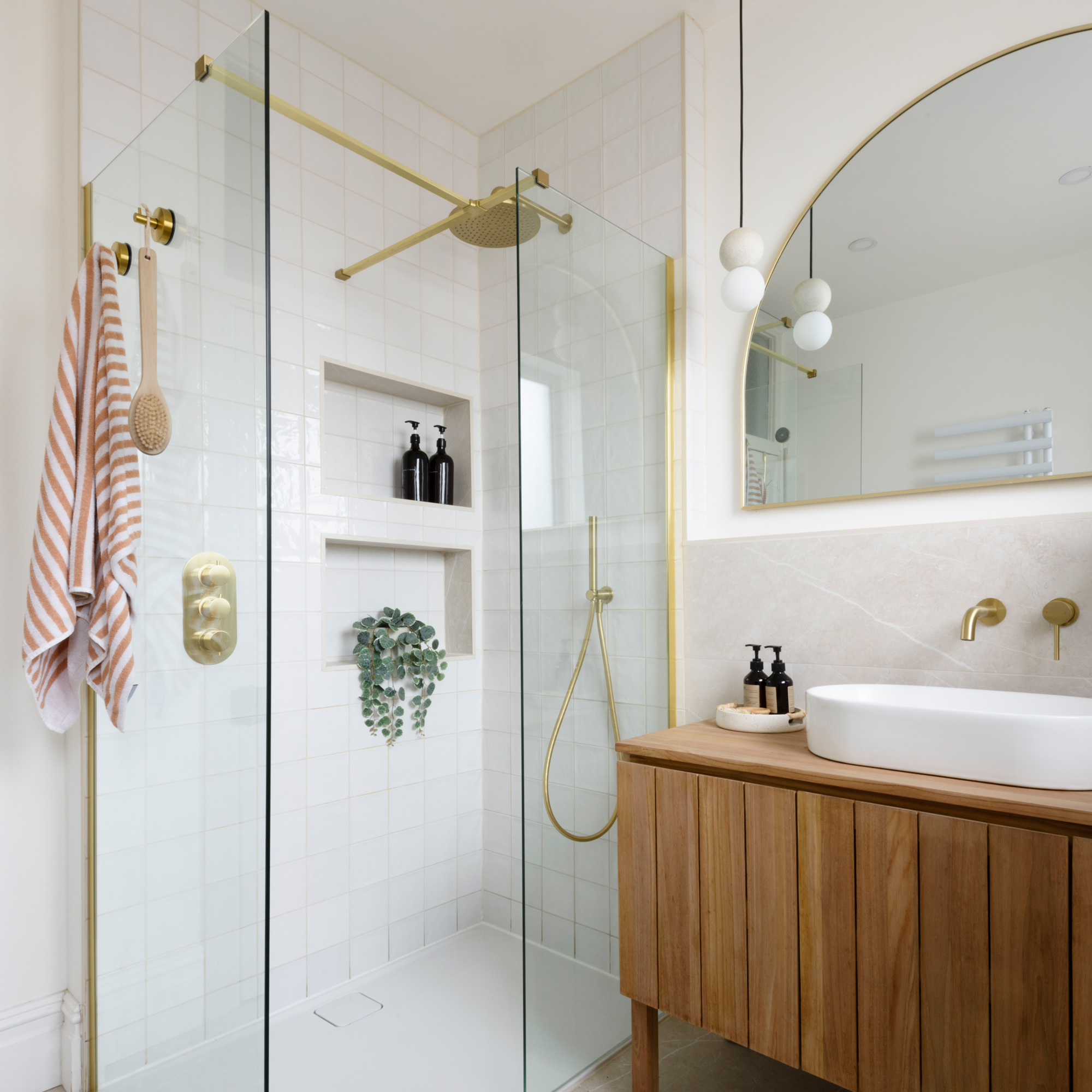
Property expert Natalie Mitchell at HomeHow.co.uk recommends 'wiping down the shower, bath, and other wet surfaces will also help to prevent too much moisture from lingering in the bathroom.'
It's a really simple yet effective habit to use a microfibre cloth or squeegee, like Mr SIGA multi-purpose squeegee, £9.99 from Amazon, to remove excess water from mirrors, tiles and glass.
It only takes a minute, but it stops moisture from sitting on cold surfaces and encourages the space to dry faster.
6. Reduce the temperature of your bath or shower
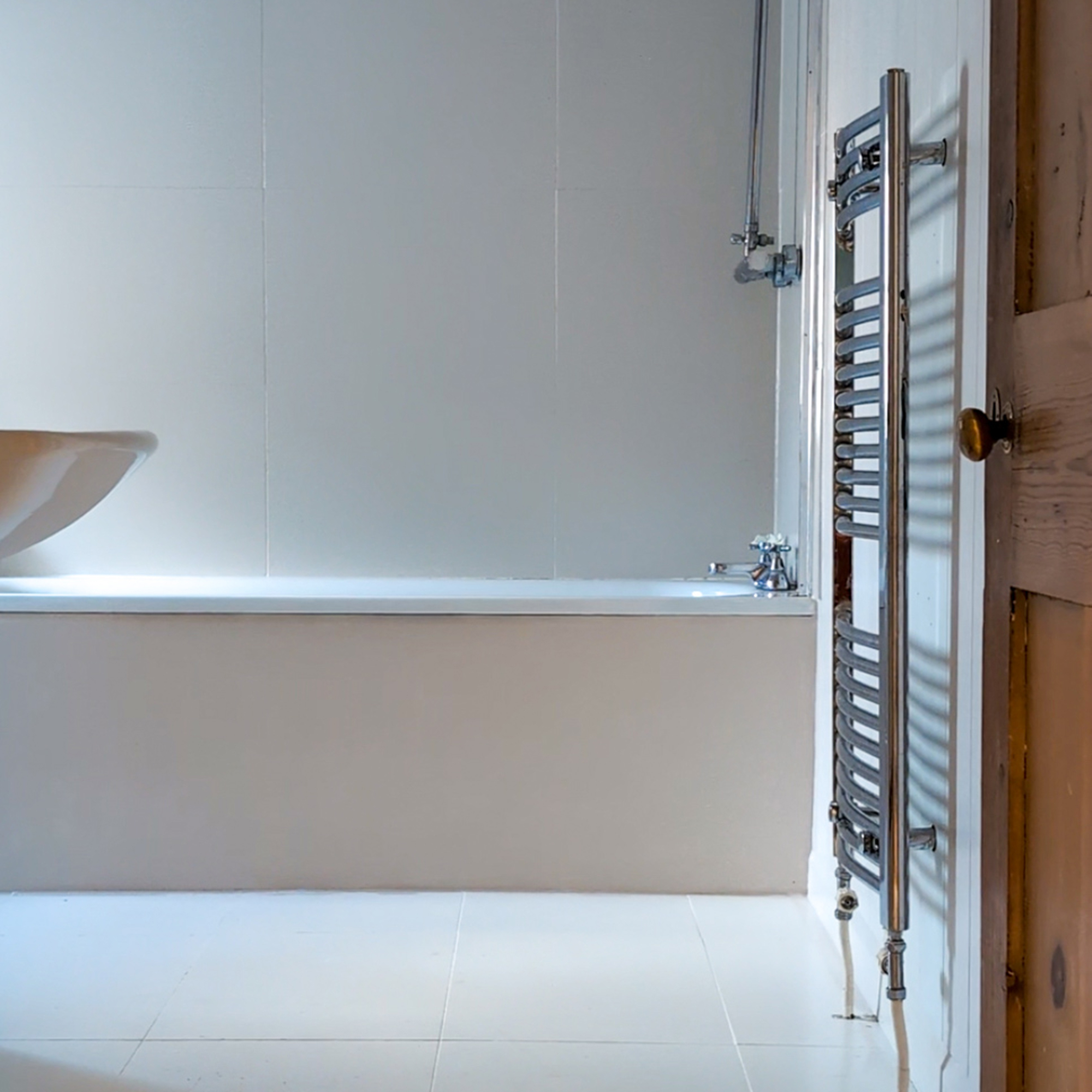
Natalie says 'reducing the temperature of your shower or adding cold water to your bath first, will also reduce the amount of steam generated in the bathroom, as will taking shorter showers.'
Very hot water creates more steam, of course, which in turn releases more moisture into the air. Lowering the temperature of the water will reduce condensation, helping your extractor fan keep up and reducing the risk of damp settling on cold surfaces.
7. Keep your bathroom warmer
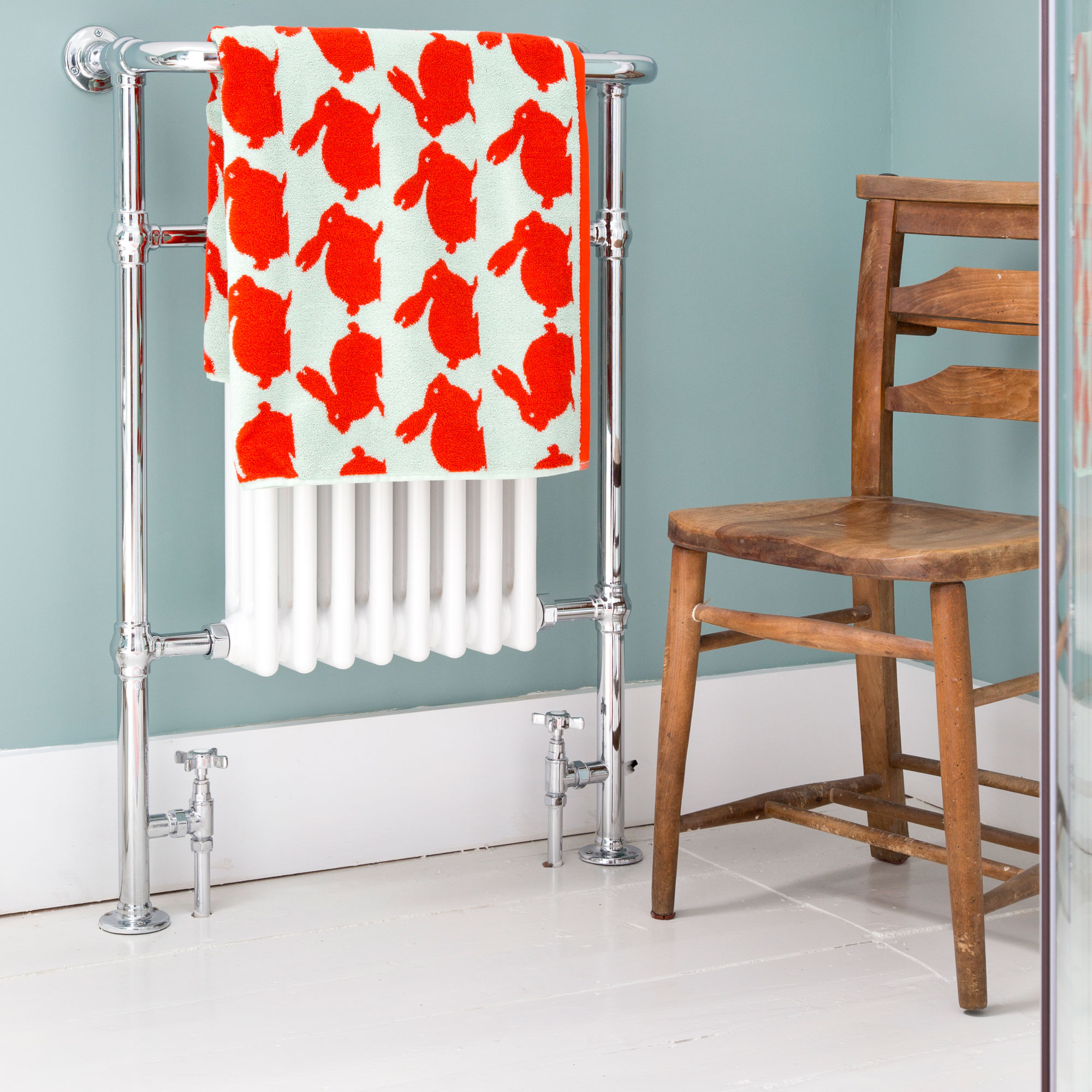
'A cold bathroom is more likely to suffer from damp, so a heated towel rail is also handy in a windowless bathroom,' explains David.
'The warmth will help to speed up the evaporation of moisture and reduce condensation. It will also help to try out towels, reducing dampness further.'
Condensation forms when warm, moist air hits a cold surface, so keeping your bathroom temperature consistent can really help. It'll reduce the temperature difference between the air and the walls, making it harder for condensation to form.
Try a heated towel rail (I particularly like this brushed brass towel radiator, £160 at Wickes) to gently warm the space up before you use your shower or bath.
My top-rated dehumidifiers for windowless bathrooms
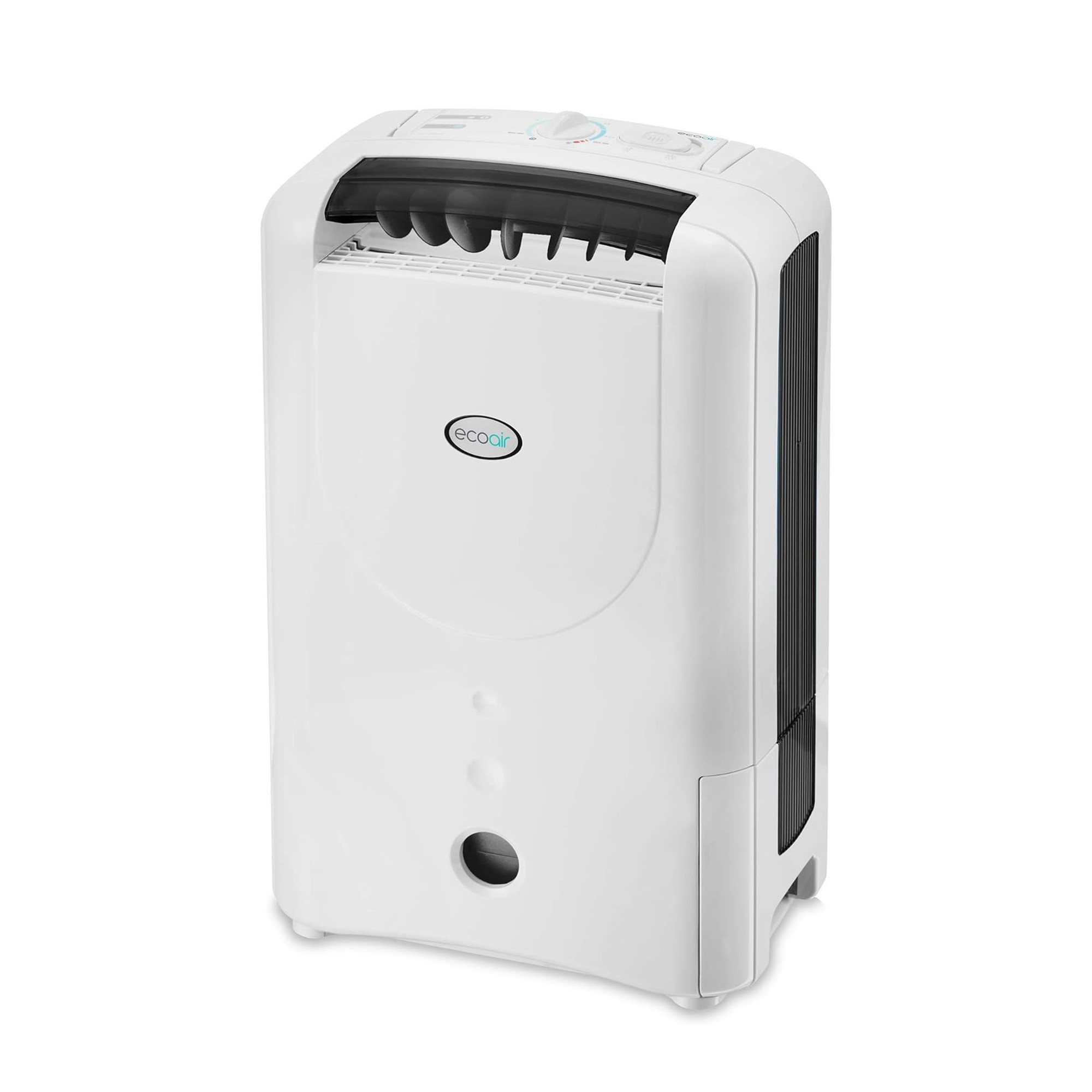
FAQs
Is an exhaust fan better than a dehumidifier in the bathroom?
If you're wondering whether to opt for an extractor fan or a dehumidifier, 'both appliances have their place but work differently to tackle the issue,' says AO.com's Katie Lilywhite. 'An exhaust fan removes moist air and flushes it outside, which is great for quick ventilation, whereas your dehumidifier removes moisture from the air in your bathroom, which is collected and stored in its water tank.'
Katie also adds that if you don’t have a fan or, for practical reasons, you are unable to install one, then having a dehumidifier is an excellent alternative. 'One in your bathroom can be more effective at controlling the room’s humidity because it actively dries the air rather than pushing it elsewhere.'
Although 'a dehumidifier is slower at reducing humidity levels and can’t be run while you’re showering for safety reasons,' adds David Cruz at MyJobQuote.
Without a window, your bathroom relies entirely on ventilation in the form of an extractor fan and good drying habits to keep condensation under control.
So, combining a decent extractor fan, a good dehumidifier, and a few new daily habits can keep damp and mould in a bathroom at bay. And don't ignore mouldy bathroom smells if the damp or mould isn't necessarily obvious, as this may be your first sign.

Jenny is Senior Digital Editor and joined the team in 2021, working across Ideal Home, Real Homes, Homes & Gardens, Livingetc and Gardeningetc. Since getting on the property ladder, her passion for interior design and gardening has taken on a new lease of life. She loves collecting and salvaging unique items (much to her other half's despair) but sniffing out stylish home bargains is her one true love.
You must confirm your public display name before commenting
Please logout and then login again, you will then be prompted to enter your display name.
